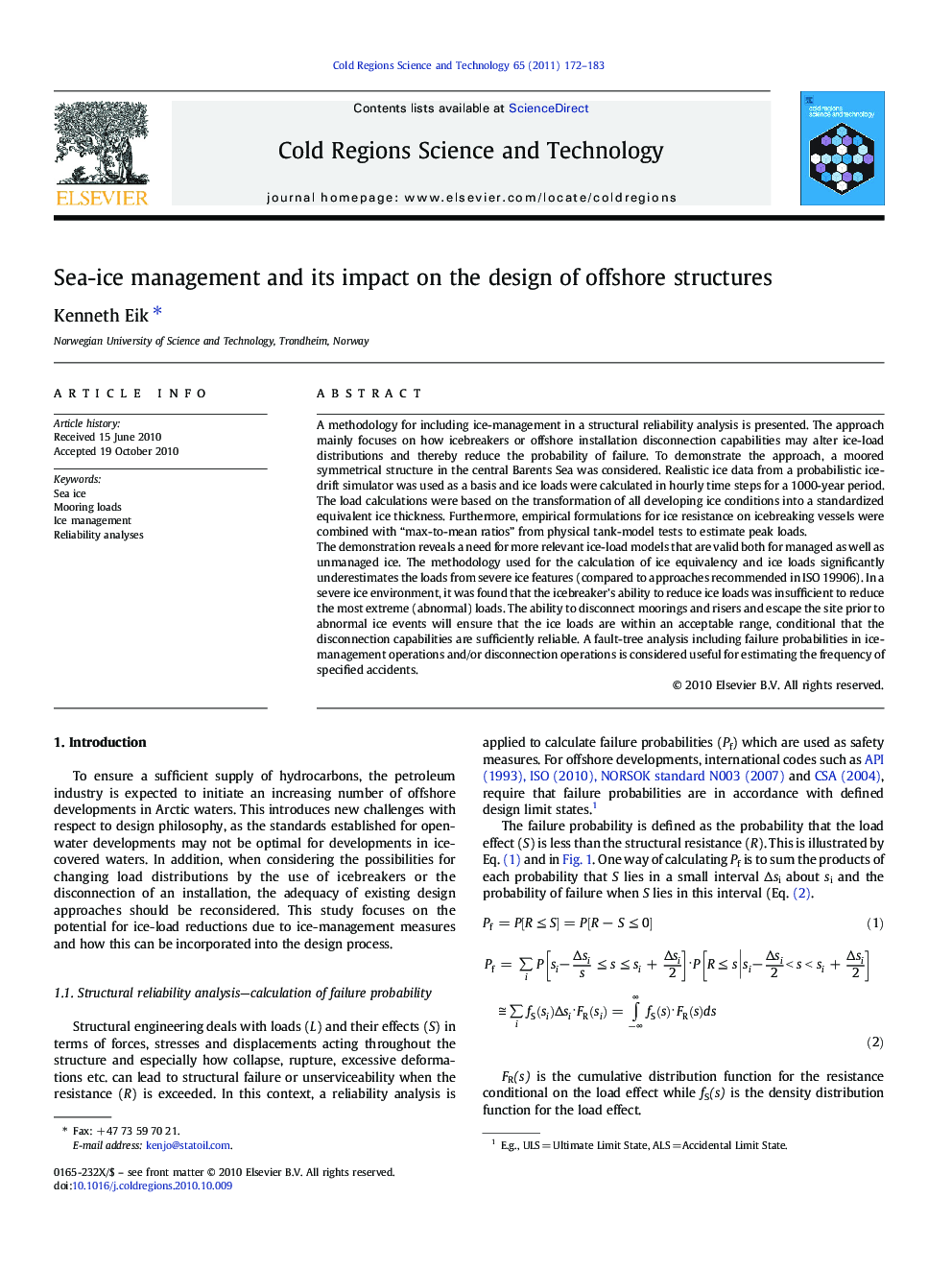| Article ID | Journal | Published Year | Pages | File Type |
|---|---|---|---|---|
| 4676162 | Cold Regions Science and Technology | 2011 | 12 Pages |
A methodology for including ice-management in a structural reliability analysis is presented. The approach mainly focuses on how icebreakers or offshore installation disconnection capabilities may alter ice-load distributions and thereby reduce the probability of failure. To demonstrate the approach, a moored symmetrical structure in the central Barents Sea was considered. Realistic ice data from a probabilistic ice-drift simulator was used as a basis and ice loads were calculated in hourly time steps for a 1000-year period. The load calculations were based on the transformation of all developing ice conditions into a standardized equivalent ice thickness. Furthermore, empirical formulations for ice resistance on icebreaking vessels were combined with “max-to-mean ratios” from physical tank-model tests to estimate peak loads.The demonstration reveals a need for more relevant ice-load models that are valid both for managed as well as unmanaged ice. The methodology used for the calculation of ice equivalency and ice loads significantly underestimates the loads from severe ice features (compared to approaches recommended in ISO 19906). In a severe ice environment, it was found that the icebreaker's ability to reduce ice loads was insufficient to reduce the most extreme (abnormal) loads. The ability to disconnect moorings and risers and escape the site prior to abnormal ice events will ensure that the ice loads are within an acceptable range, conditional that the disconnection capabilities are sufficiently reliable. A fault-tree analysis including failure probabilities in ice-management operations and/or disconnection operations is considered useful for estimating the frequency of specified accidents.
